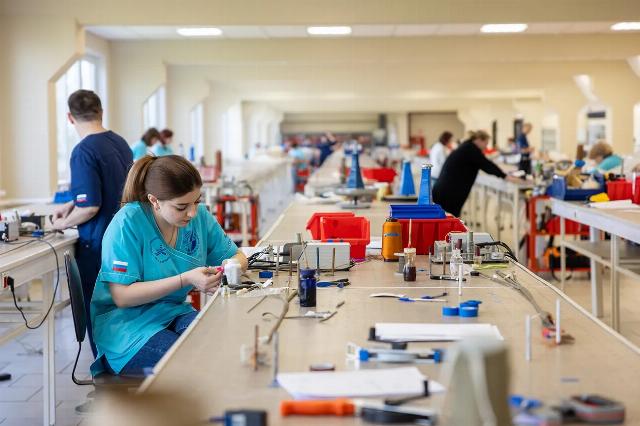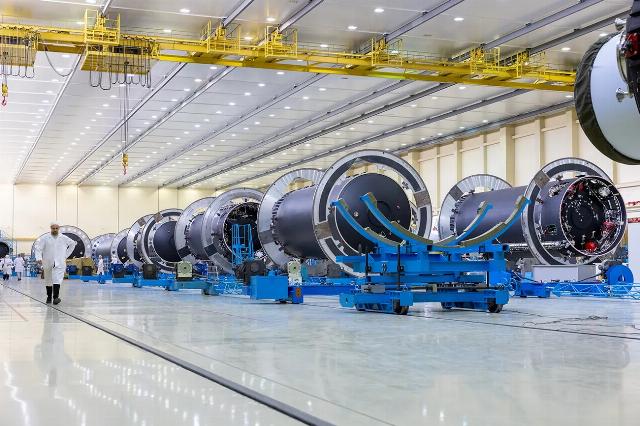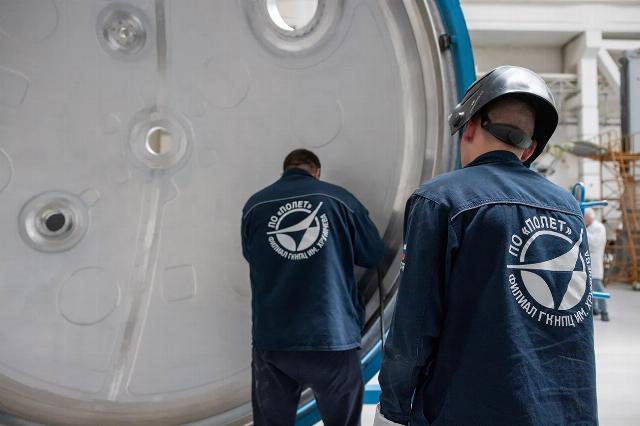The Polet Production Association is one of the largest industrial enterprises in Russia, which has been specializing in the production of aviation and rocket and space technology for more than 80 years. The vast territory of the enterprise seems to be inscribed in Omsk itself, has become a part of it. This is logical since production here was established on July 24, 1941 on the basis of Moscow evacuated aircraft factories No. 156 (now Tupolev OJSC, part of the United Aircraft Corporation) and No. 81 (now Tushinsky Machine-Building Plant OJSC), as well as several Omsk plants.
During the war, more than 80 Tu-2 bombers and more than 3,500 Yak-9 fighters were produced here. Yaks produced by Polet covered themselves with glory in the sky over the Kursk Bulge, near Berlin and even as part of the Normandy-Neman squadron. From July 1949 to August 1955, the best jet bomber of that time, the Il-28, was produced at Polet (758 aircraft were produced). Then it was here that the first Tu-104 civilian jet went into production.
Since 1958, the company has been mass-producing single-stage medium-range ballistic missiles R-12 (8K63) and R-12U (8K63U. In total, more than 500 R-12 missiles were manufactured. Since 1961, Polet software has been producing two-stage intercontinental ballistic missiles R-16 (8K64) and R-16U (8K64U). About 330 missiles were fired.
Since 1968, production of the Kosmos-3M light class launch vehicle has been launched, which has become the most reliable in its class. The Kosmos-3M launch vehicle has successfully launched spacecraft into elliptical and circular orbits more than 400 times, both according to Soviet and international programs. In 1978, work began on the organization of serial production of RD-170 rocket engines for the Energia-Buran rocket and space system "from scratch" at Polet software.
Already in modern times, the plant has been reoriented to produce Angara light and heavy class launch vehicles. We started only with the first stage, but now both the first and second stages are being manufactured at the enterprise, the production of the third stage is being prepared and the transition to a full production cycle is underway.
The plant has a huge territory and quite large opportunities for expansion and creation of new buildings. On the territory there is a mock-up of the Angara-A5 launch vehicle and an An-3T aircraft that visited the South Pole of our planet. However, it is much more interesting what happens inside the workshops.
 |
| The production association "Flight". |
| Source: prokosmos.ru |
The main material for creating the Angara launch vehicle is aluminum. Workpieces of the same size, measuring several square meters, first enter the vertical milling machine. And on the one hand, everything superfluous is selected from the aluminum sheet, creating a so-called "wafer", a billet of much lower weight, but with a large number of stiffeners.
So that the sheet does not bend in the opposite direction during the operation of the cutter, the same head goes from the reverse side, but without a cutter, mirrored. It's like she's supporting a leaf, leaving it straight. Such milling is used in almost any space industries where it is required to reduce weight, but maintain structural rigidity. By the way, most of the ISS modules were created using the same technology.
Then the milled sheet goes to the galvanization station, where the process of applying a layer of another metal or alloy to the metal surface using an electric current takes place. It takes place in a special bath with a conductive solution, into which anodes from the applied metal and cathodes from the treated metal are immersed. The tub is so big that the whole sheet fits into it.
Then, on a special machine, the sheets are bent, obtaining from the blank the halves of the cylinder, the basis of future tanks "Angara". Most modern rockets have a carrier body, that is, its basis is the tanks themselves, which become much stronger under pressure from the fuel or oxidizer collected in them. There is no other frame in the rocket.
The initial basis and idea of Angara is the unification of universal missile modules (UTM). For a light-class rocket, one UTM is needed, plus a second stage, for a heavy rocket - five UTMs and a second stage. Each UTM is essentially a long tank for kerosene and a second, slightly shorter one for liquid oxygen. They are connected vertically, and the engine, control system and so on are connected to them.
 |
| The production association "Flight". |
| Source: prokosmos.ru |
And there are a lot of blanks for future URMs on the "Flight". In huge light workshops there are already bent "wafers", they are immediately welded into tanks, the upper and lower parts are welded and flanges are embedded. And all this in a large, beautiful, bright workshop.
Most of the employees are young boys and girls. The average age of the company's employees is 43 years. Guys come after university or college for a salary of 60 thousand, literally in a year they reach 100-110, then working on CNC machines can increase their income to more than a decent 160 thousand.
The staff is working very well, they visit almost all educational institutions in Omsk, constantly participate in job fairs, talk about the plant. The search for frames does not stop for a minute. There are even Muscovites at the enterprise who used to work at the Khrunichev plant in Moscow, but moved to Omsk.
In the second workshop, which was shown to us, the final assembly, painting and testing of universal rocket modules are carried out. They are covered with a thick layer of foam to reduce heat loss, engines with an ignition system are installed, cables and wiring are laid along the entire length of the harnesses. Then the finished parts of the future rocket are brought to the control and measuring station (CIS) for verification. There are two of them on the "Flight" – for a light and heavy rocket. However, there will soon be a third, vertical one. We were shown a building under construction for her.
After verification, the finished rockets are sent in parts to the cosmodrome. Such a set is called a "package", and the space rocket is finally assembled from its package already in the installation and test building of the cosmodrome. For Angara, this is Vostochny or Plesetsk. Wagons are already standing on the territory of the Omsk enterprise, ready to load the next rocket.In general, "Flight" leaves only positive feelings. Wonderful people, bright workshops with white walls, working production without fuss and interruptions. Omsk is worth the trip, but to see the place where the snow-white beauty "Angara" is born is priceless.
Mikhail Kotov

